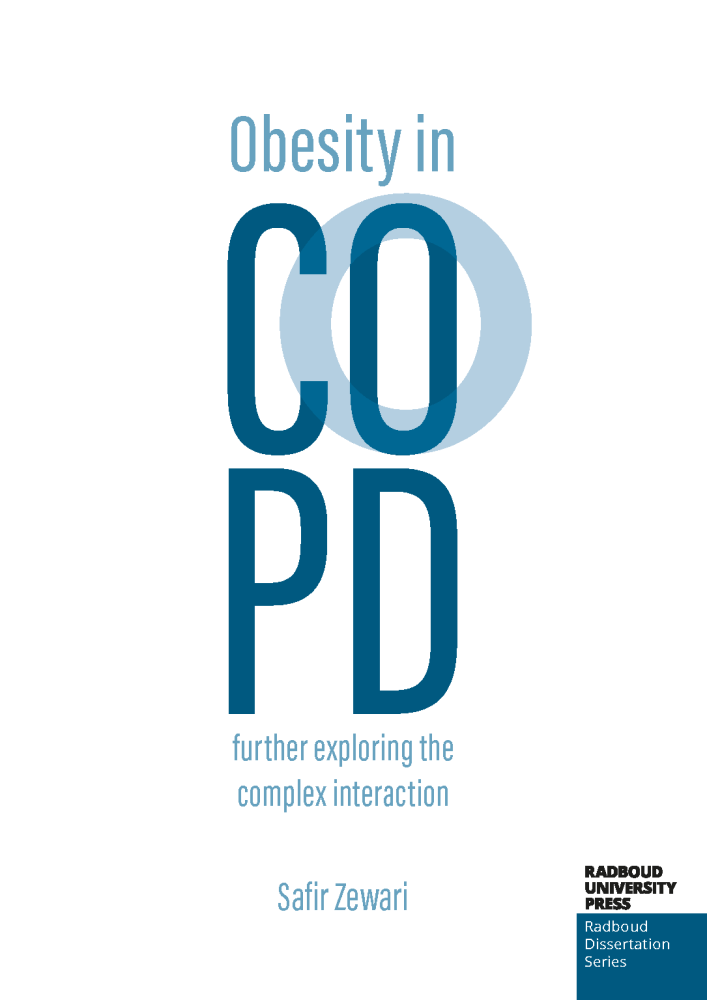Obesity in COPD: Further exploring the complex interaction
Keywords:
COPD, ObesitySynopsis
Chronic Obstructive Pulmonary Disease (COPD) is a complex lung condition characterized by persistent respiratory symptoms and airflow obstruction. Obesity, defined as a BMI ≥ 30 kg/m², commonly co-occurs with COPD, influencing its clinical outcomes. This thesis examines the interaction between these conditions.
Prevalence of obesity in COPD patients varies according to studies. Obesity is most prevalent in mild to moderate COPD, with lower rates in severe to very severe COPD. Obese COPD patients have more comorbidities, particularly cardiovascular and metabolic. Obesity's impact on pulmonary function and symptoms is mixed: it reduces lung hyperinflation and improves diffusing capacity but increases exercise-induced dyspnea, driven more by fat mass and distribution than BMI.
The thesis also identifies a high prevalence (66%) of sleep hypoventilation in severe COPD, a potential precursor to respiratory failure, but this was unrelated to BMI. These findings highlight the complexity of COPD-obesity interplay, where obesity can be both beneficial and detrimental depending on the outcome assessed.
A simplistic focus on BMI and airflow obstruction alone is insufficient. Future research must consider COPD and obesity heterogeneity to enable tailored interventions for individual patients.

Published
Series
Categories
License

This work is licensed under a Creative Commons Attribution-NonCommercial-NoDerivatives 4.0 International License.

